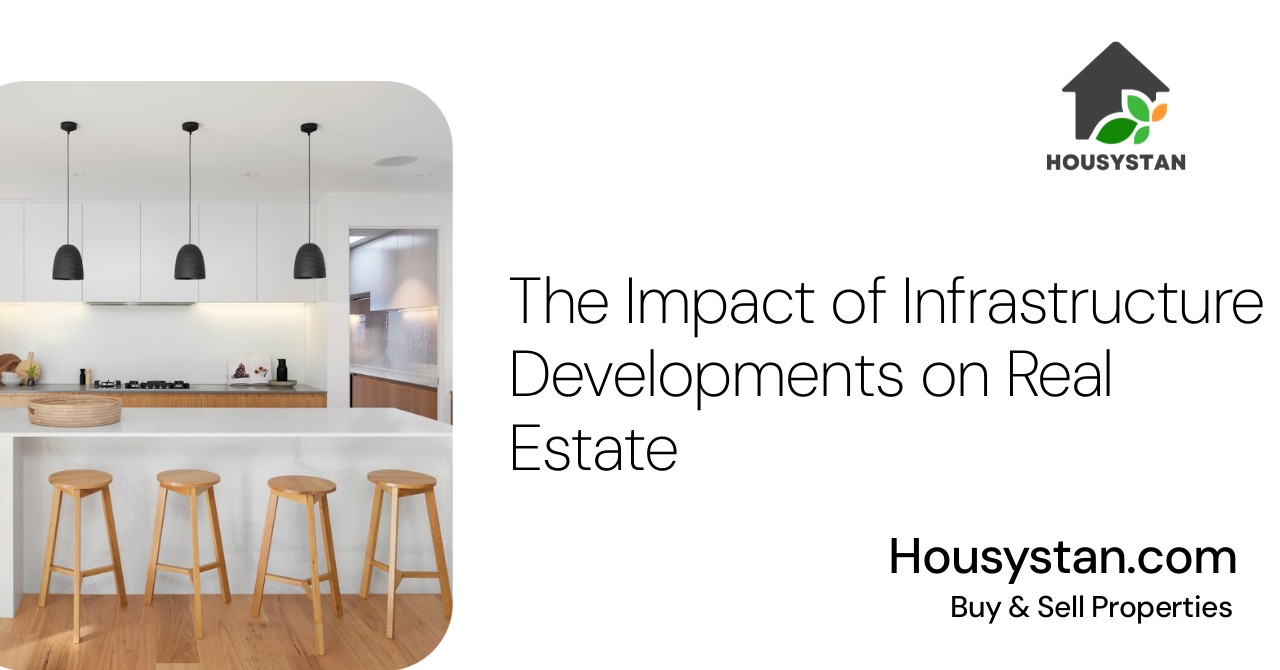The Impact of Infrastructure Developments on Real Estate
Read latest blogs and articles from Housystan

The Information mentioned here was last updated on:
21/12/2025The Impact of Infrastructure Developments on Real Estate
In recent years, infrastructure developments have become a pivotal factor influencing real estate markets across the globe. Understanding how emerging roads, bridges, airports, and public transportation systems shape property values can provide valuable insight for homebuyers, investors, and policymakers alike. This article delves into the various ways infrastructure plays a decisive role in real estate dynamics, using straightforward terms and real-world examples.
Boosting Accessibility and Property Value
- Verified Tenants/Buyers
- Unlimited Property Listing
- Zero subscription/charges fee
One of the most direct effects of infrastructure development is improved accessibility. When a new highway connector or mass transit line reduces travel time to major employment centers, residential areas near these improvements often see a rise in demand. For example, areas in proximity to newly built subway stations frequently experience an increase in property values. This is because commuting becomes more convenient, attracting homebuyers and renters seeking more viable living options without sacrificing the ease of reaching their workplaces.
The Ripple Effect of New Roads
The construction of new roads not only eases traffic congestion but also opens up previously underdeveloped areas to real estate development. A new roadway can quickly transform rural or unutilized land into potentially lucrative real estate investments. As accessibility barriers fall, land previously considered too remote suddenly becomes viable for residential, retail, or industrial projects. This influx often leads to a boom in construction and, consequently, a rise in property values in the vicinity.
Enhancing Economic Opportunities
Infrastructure improvements do more than just change physical landscapes; they bolster economic growth, which can have far-reaching implications for real estate. Improved infrastructure enables businesses to operate more efficiently, reducing transportation costs for goods and services. This economic activity can attract new businesses, leading to job creation and a positive cycle of economic development that can enhance the desirability of local real estate markets.
Infrastructure and Urban Renewal
Cities undergoing urban renewal often rely on infrastructure developments to rejuvenate declining areas. By investing in transportation networks and utilities, governments can breathe new life into aging neighborhoods. These projects can attract new residents and businesses, leading to increased demand for housing and commercial spaces. The transformation of New York's Meatpacking District, for example, is a testament to how infrastructure improvements like new parks and transportation access can revitalize a community, spurring real estate growth.
Challenges and Considerations
While infrastructure developments can present opportunities for real estate markets, there are also challenges and considerations that must be addressed to ensure sustainable growth. Unchecked development can lead to issues such as gentrification, where long-time residents are priced out of their neighborhoods. Additionally, the environmental impact of massive construction projects can be a concern, necessitating careful planning and community engagement.
Balancing Growth and Environment
Developing new infrastructure often necessitates a careful balance between growth and environmental stewardship. Construction can lead to habitat destruction and increased pollution if not managed properly. Cities need to incorporate sustainable practices in their infrastructure projects to minimize adverse effects. This balance is essential for maintaining long-term property values, as potential buyers and investors increasingly prioritize environmental sustainability.
The Role of Public Policy
Public policy is instrumental in guiding the relationship between infrastructure development and real estate. Government initiatives can stimulate or impede growth through zoning laws, tax incentives, and regulations. Well-thought-out policies ensure that infrastructure projects benefit communities without unintended negative consequences.
Incentives for Development
Governments often use incentives to encourage development in specific areas. Tax breaks, grants, and subsidies can attract companies and residents, boosting local economies and, in turn, increasing property values. The strategic use of these incentives can help steer real estate growth in directions that align with broader city planning goals, such as reducing urban sprawl or promoting affordable housing.
Trends and Future Outlook
Looking ahead, trends in infrastructure and real estate suggest a continued focus on connectivity and sustainability. As telecommuting becomes more prevalent, infrastructure projects may increasingly aim to support digital networks and smart city initiatives, impacting how and where people choose to live.
Smart Cities and Beyond
Investment in smart city infrastructure promises to redefine real estate development. Modern technology, such as 5G networks and IoT devices, enhances urban living by offering increased efficiency and quality of life. Real estate markets that embrace this progression, integrating technological advancements into the fabric of everyday life, are likely to thrive in the coming years.
Infrastructure improvements are a powerful catalyst for real estate development, potentially transforming local economies and increasing property values. Understanding this impact is essential for anyone involved in real estate, from homeowners and investors to city planners and policymakers. By investing wisely in infrastructure, communities can create lasting benefits for residents and businesses alike, fostering growth that aligns with both economic and environmental goals.